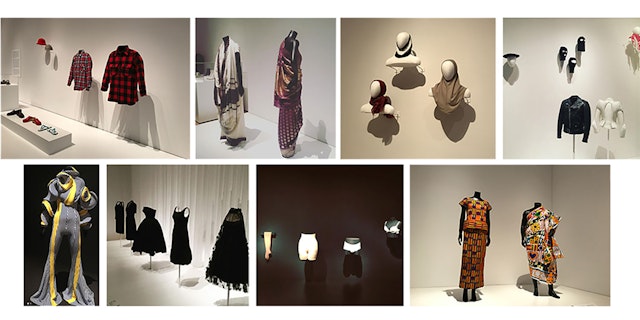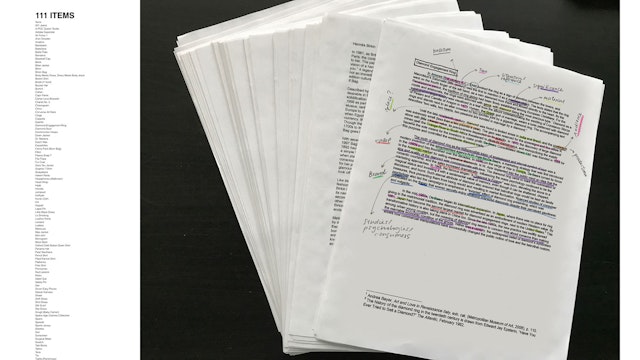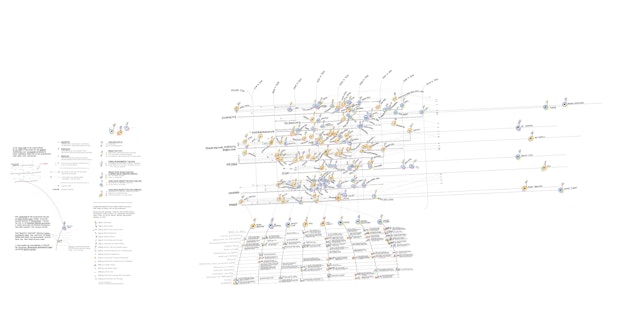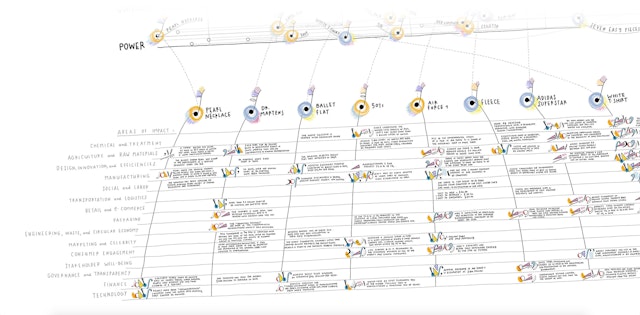


The designers wanted to dig deeper, to understand why each item had such significance and what criteria underpinned the curators’ choices.




Rather than confront visitors with bold, reductive insights, Lupi’s approach invites them to slow down and consider more deeply why and how these fashion items have impact on the world.



In 2017, MoMA commissioned Pentagram Partner Giorgia Lupi and her team (then at Accurat) to create an original work for the exhibition, Items: Is Fashion Modern? The show featured 111 items of culturally significant clothing and accessories from around the world. Among the artifacts displayed were Levi’s 501 jeans and the little black dress, the Breton shirt and the pearl necklace, the sari, the Dashiki, the kippah, and the keffiyeh.
Lupi and her team embarked on the singular task of finding data within the collection of iconic pieces and then transforming it into an original visual statement. Key challenges were to represent the inspiration, themes, and ideas that guided the curators’ selection process, and to incorporate the “Quantum Redesign of Fashion,” a model for sustainable business practices in the industry developed by the Fair Fashion Center (FFC) at Glasgow Caledonian New York College.
The design team began by investigating the history of each object, combing through the curators’ documentation and FFC’s research for patterns and principles. They immediately realized how pervasively fashion connects individuals and cultures, and how strongly it affects the ways people live, think, and express themselves. The designers wanted to dig deeper, to understand why each item had such significance and what criteria underpinned the curators’ choices.
To extract data from the diverse collection, the designers conceived a set of questions to categorize each item. Was it a medium or a message: selected for innovative design or production features or because it made an artistic statement? Was it a cause or an effect: did it spark social change, or was it the product of a specific moment in cultural history? Was it worn to conform or rebel? Why was it considered modern?
The resulting datasets were atypical, not based on numbers and other fixed concepts, but on subjective interpretations of fluid ideas like culture, identity, inspiration, and belonging. The designers then considered how to represent this “soft” data in meaningful data visualizations. Their overall aim was to create an installation that would enrich the visitor experience, that would give people different pathways to understanding and interpreting the show.
Ultimately, Lupi and her colleagues built their artwork, called Data ITEMS: A Fashion Landscape, around two points of view about the collection:
1. “The Landscape” depicts all 111 items and provides both an overview of the show and a visual language reflecting the defining stories and characteristics of each piece exhibited.
2. “The Capstones” are eight iconic items whose stories the designers visually exploded. Diagrams traced the commercial lifecycle of these items from design, to production, to marketing, to distribution, to recycling using the “Quantum Redesign of Fashion” framework.
Lupi’s intricate, hand-drawn installation combines familiar chart structures with original, organic graphics and personal narrative. While based on data, the visualization depicts the more subjective, intimate, human, and therefore imperfect, aspects of the information, which inspire curiosity and connection. Rather than confront visitors with bold, reductive insights, Lupi’s approach invites them to slow down and consider more deeply why and how these fashion items have impact on the world.
Client
The Museum of Modern ArtSector
- Arts & Culture
Discipline
- Signage & Environmental Graphics
- Exhibitions
- Data Driven Experiences
